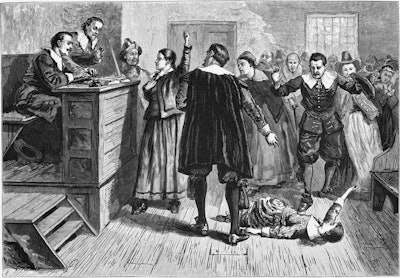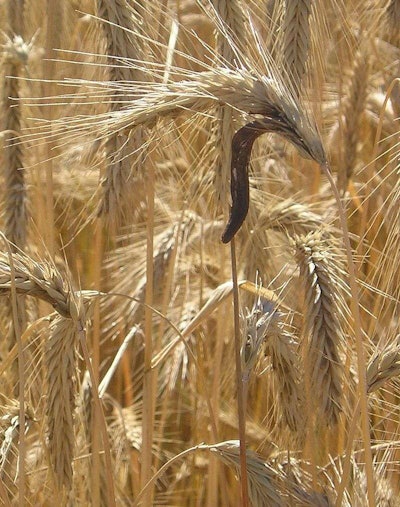 Many of the “bewitched” girls claimed to be bitten and pinched by invisible attackers and had spasms.
Many of the “bewitched” girls claimed to be bitten and pinched by invisible attackers and had spasms.Photo: Wikipedia
Plant diseases are often a nuisance and something to be on the lookout for in the garden, but sometimes they can have a far more serious effect on humans.
Although plant diseases rarely cause direct damage to humans, ergot is a fungal disease caused by Claviceps purpurea that can poison both people and animals if consumed, resulting in a condition called ergotism.
There are two sets of symptoms that can appear in cases when ergot poisoning occurs: gangrenous and convulsive.
Gangrenous ergotism can cause the infected individual to lose extremities due to decreased blood flow, while convulsive ergotism affects the nervous system causing symptoms like tremors, delusions, convulsing seizures, hallucinations, and violent muscle spasms.
The symptoms of convulsive ergotism have been recognized as the possible cause or influence of certain historical events, including the infamous Salem Witch Trials that occurred in 1692 in Salem, Massachusetts.
In 1976, behavioral psychologist Linnda Caporael proposed just that arguing that it is very well possible ergot poisoning was the catalyst behind this bizarre chapter of history.
The disease grows on rye and other small grains and favors severely cold winters, followed by a wet spring. Caporael found from recorded weather patterns during that time period that the growing conditions were ideal for ergot to spread on rye, a staple grain of Salemites.
 Claviceps purpurea grows on ears of rye.
Claviceps purpurea grows on ears of rye.Photo: Wikipedia
The discolored sclerotia of the fungus was often mistaken for large, discolored grains of rye so the villagers didn’t think anything about grinding up the fungus and putting it in their bread.
Another detail Caporael discovered was that nearly all of the accusers lived in the western section of the village, which was a swampy meadow region that would have been a prime breeding ground for the fungus.
As the Salem area entered a drought, the accusations ceased as well, which caused Caporael to hypothesize that ergot poisoning had been the driving factor for the trials once the ‘bewitchments’ discontinued around the same time as the drought.
Still considered a fringe theory by historians, as it is impossible to definitely prove that the bread was tainted, ergot poisoning serves as an interesting explanation for the initial cause of the afflicted girls’ behavior.
Instead of it being simply based on social-political motives, or the boredom of teenage girls, Caporael suggests that the medical explanation of convulsive ergotism served as an agitator for the following fervor and mass hysteria.









